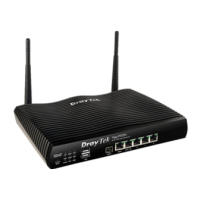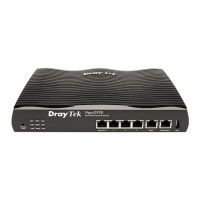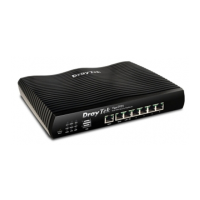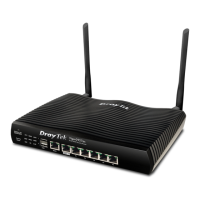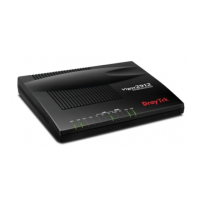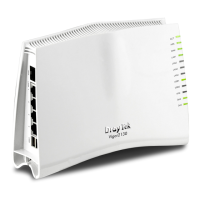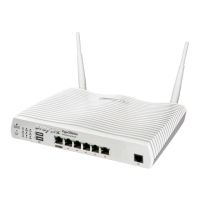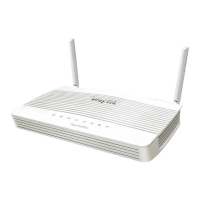directly, for example, “-l 172.16.3.9”.
addr1:addr2 – It means Range address. Please specify the IP
addresses, for example, “-l 172.16.3.9: 172.16.3.50.”
addr1:subnet – It means the subnet address with start IP address.
Please type the subnet and the IP address, for example, “-l
172.16.3.9:255.255.0.0”.0
any – It means Any address. Simple type “-l” to specify any address
for this command.
-p <DSCP id> Specify the ID.
-s <Service type> Specify the service type by typing the number. The available types
are listed as below:
1:ANY 2:DNS 3:FTP 4:GRE 5:H.323
6:HTTP 7:HTTPS 8:IKE 9:IPSEC-AH 10:IPSEC-ESP
11:IRC 12:L2TP 13:NEWS 14:NFS 15:NNTP
16:PING 17:POP3 18:PPTP 19:REAL-AUDIO 20:RTSP
21:SFTP 22:SIP 23:SMTP 24:SNMP 25:SNMP-TRAPS
26:SQL-NET 27:SSH 28:SYSLOG 29:TELNET 30:TFTP
-S <d/s> Show the content for specified DSCP ID/Service type.
-V <1/2/3> Show the rule in the specified class.
[…] It means that you can type in several commands in one line.
E
E
x
x
a
a
m
m
p
p
l
l
e
e
> qos class -c 2 -n draytek -a -m 1 -l 192.168.1.50:192.168.1.80
Following setting will set in the class2
class 2 name set to draytek
Add a rule in class2
Class2 the 1 rule enabled
Set local address type to Range, 192.168.1.50:192.168.1.80
T
T
e
e
l
l
n
n
e
e
t
t
C
C
o
o
m
m
m
m
a
a
n
n
d
d
:
:
q
q
o
o
s
s
t
t
y
y
p
p
e
e
This command allows user to configure protocol type and port number for QoS.
S
S
y
y
n
n
t
t
a
a
x
x
qos type [-a <service name> | -e <no> | -d <no>].
S
S
y
y
n
n
t
t
a
a
x
x
D
D
e
e
s
s
c
c
r
r
i
i
p
p
t
t
i
i
o
o
n
n
Parameter Description
-a <name> It means to add rule.
-e <no> It means to edit user defined service type. “no” means the index
number. Available numbers are 1~40.
-d <no> It means to delete user defined service type. “no” means the index
number. Available numbers are 1~40.
-n <name> It means the name of the service.
-t <type> It means protocol type.
6: tcp(default)
17: udp
0: tcp/udp
<1~254>: other
-p <port> It means service port. The typing format must be [start:end] (ex.,
510:330).

